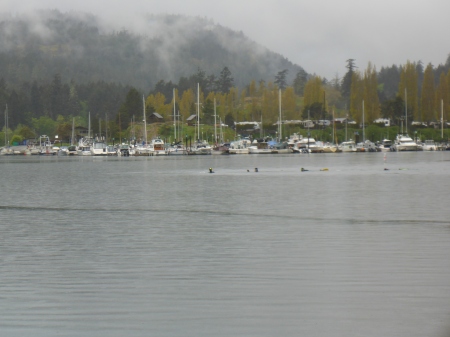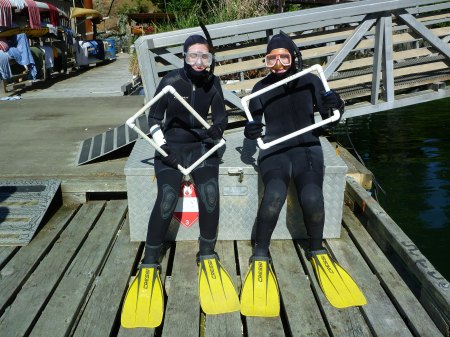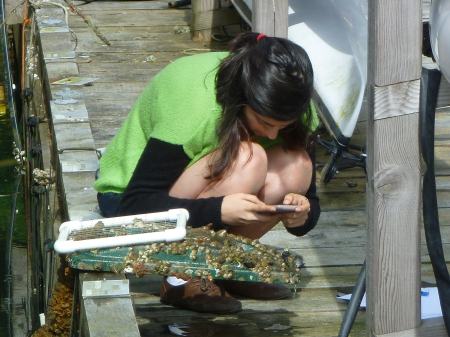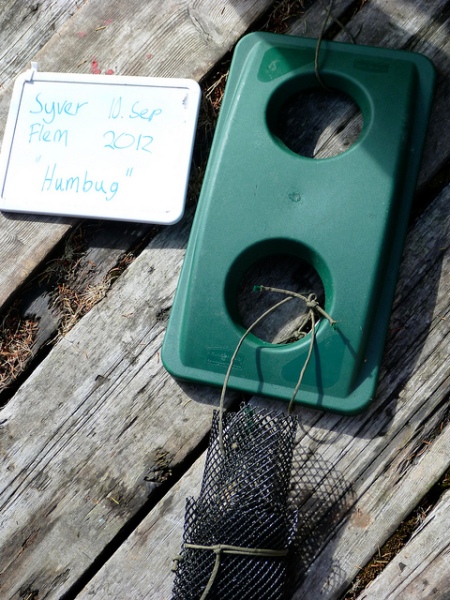Every year I issue a challenge to marine scientists to compare the biodiversity of two habitats. I suggest high & low in the intertidal, horizontal & vertical in the rocky intertidal, plankton tows in two locations or two areas on the dock. I always offer the option of snorkelling and a few students, like 3 or 4, usually take me up on it.
This year there were more takers for the snorkelling option than ever – 7 students in the first class and 6 in the second class.

A few students even snorkelled across Pedder Bay to compare the two different sides of the bay (see photo above).
And not all students snorkelled, below are Tomma in the intertidal and Karel sampling plankton at the green buoy. While Karel and I were in Hyaku, we watched a submarine make its way to the navy dock.
For more photos see Flickr album Biodiversity 2017.
And for a reminder of last year’s sampling see Biodiversity in Pedder Bay.





































